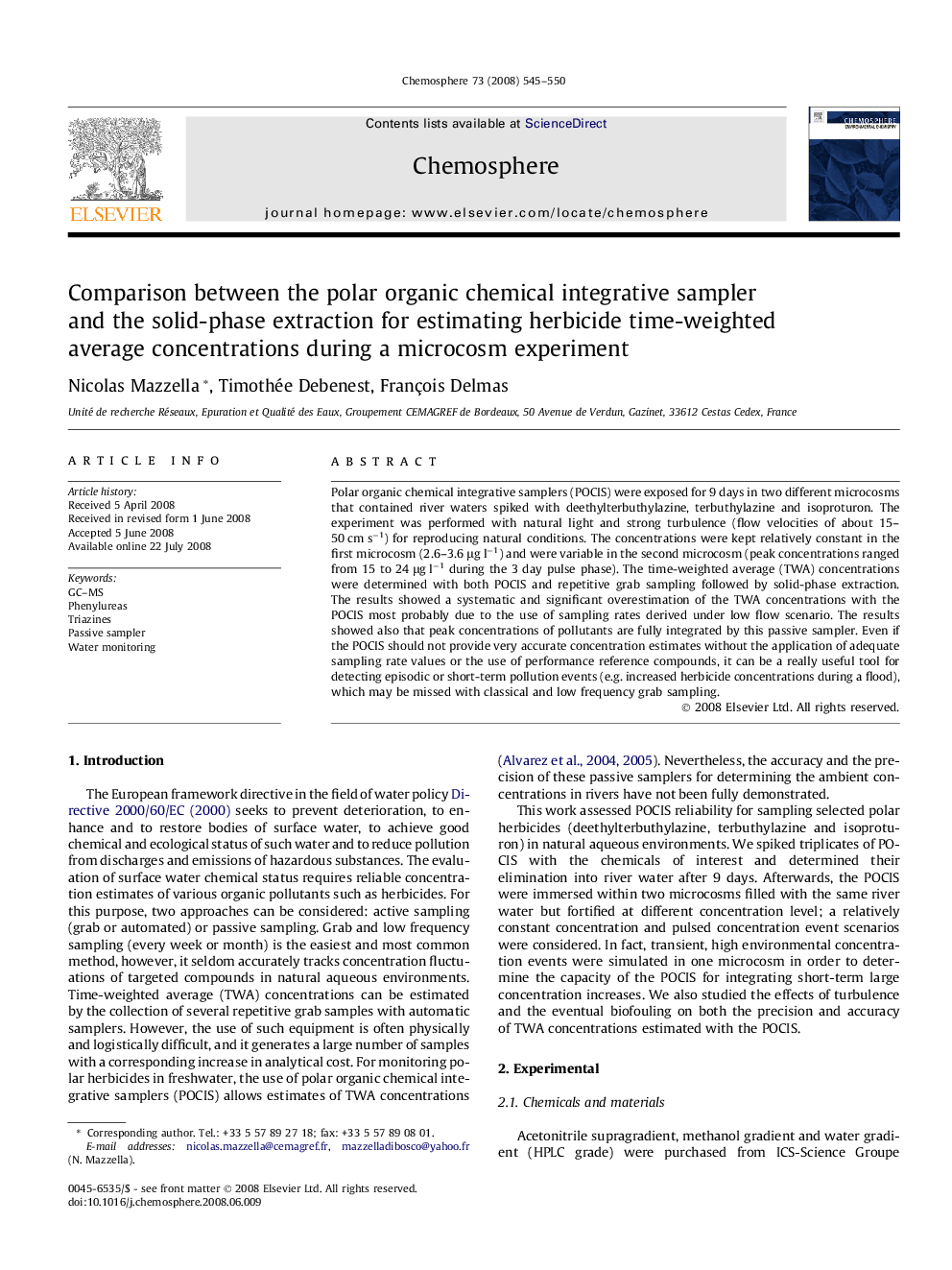| Article ID | Journal | Published Year | Pages | File Type |
|---|---|---|---|---|
| 4413323 | Chemosphere | 2008 | 6 Pages |
Polar organic chemical integrative samplers (POCIS) were exposed for 9 days in two different microcosms that contained river waters spiked with deethylterbuthylazine, terbuthylazine and isoproturon. The experiment was performed with natural light and strong turbulence (flow velocities of about 15–50 cm s−1) for reproducing natural conditions. The concentrations were kept relatively constant in the first microcosm (2.6–3.6 μg l−1) and were variable in the second microcosm (peak concentrations ranged from 15 to 24 μg l−1 during the 3 day pulse phase). The time-weighted average (TWA) concentrations were determined with both POCIS and repetitive grab sampling followed by solid-phase extraction. The results showed a systematic and significant overestimation of the TWA concentrations with the POCIS most probably due to the use of sampling rates derived under low flow scenario. The results showed also that peak concentrations of pollutants are fully integrated by this passive sampler. Even if the POCIS should not provide very accurate concentration estimates without the application of adequate sampling rate values or the use of performance reference compounds, it can be a really useful tool for detecting episodic or short-term pollution events (e.g. increased herbicide concentrations during a flood), which may be missed with classical and low frequency grab sampling.
